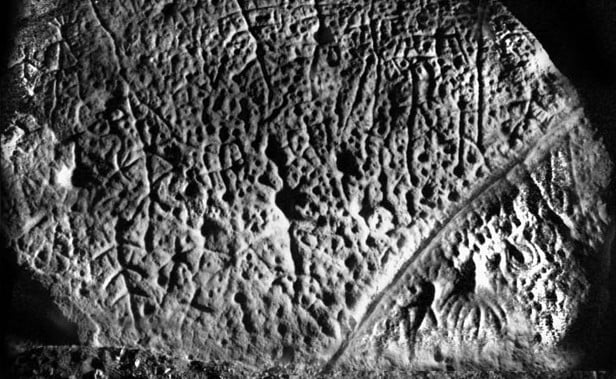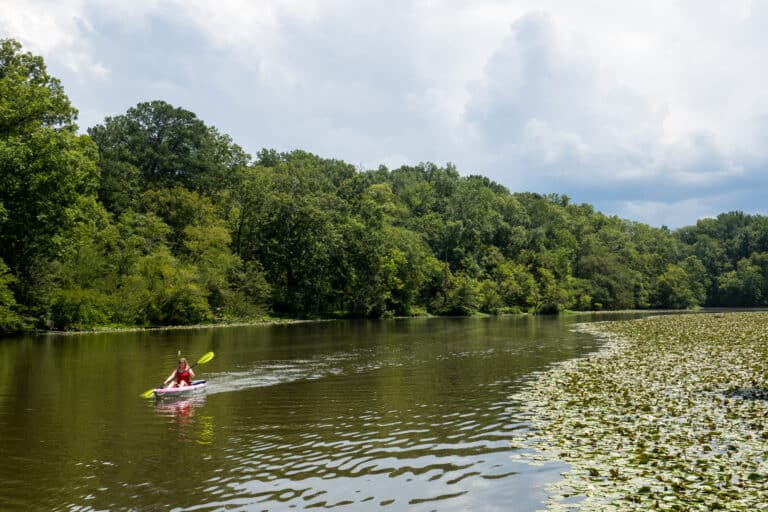Native American rock art is typically associated with the Western United States (picture images of buffalo painted high on a desert bluff), but the Southern Appalachians is home to hundreds of ancient rock art sites. Typically, the art consists of rudimentary rock etchings called petroglyphs that were created by the Native Americans living in the area 3,000 years ago, long before the Cherokee. But because of the South’s scarcity of public lands, most of the sites remain unknown or off-limits.
“We’ve had a lot of development in the South, so it’s likely many of the rock art sites have been destroyed unknowingly,” says Lorie Hansen, project director for the North Carolina Rock Art Survey. “But we have every reason to believe the Native Americans in the Southeast were every bit as prolific in their rock art as Native Americans in the West.”
Probably the most famous petroglyph in the South is Judaculla Rock, a large, flat soapstone boulder in Jackson County, N.C., with hundreds of hand-carved figures and symbols, ranging from human handprints to geometric shapes. Exactly who carved the symbols remains a mystery.
“We’re not certain about the who, why, or even the when of Judaculla,” says Hansen, who is working on a comprehensive restoration of the site, which is one of the few significant rock art sites located on public land in our region. The uncertainty extends to most rock art sites in the Southeast.
“The majority of glyphs around the South were carved somewhere between 1000 B.C. and contact with the first Europeans,” Hansen says. “But we can’t carbon date rock the way you can organic material, so it’s difficult to know for sure.”
The carvings on Judacalla may have been started by one tribe of Native Americans dating back to 1500 B.C., but it’s likely the carvings were added to by subsequent tribes, perhaps even the Cherokee. Track Rock, a series of petroglyphs on soapstone boulders in Georgia’s Chattahoochee National Forest, has evolved in the same manner. On the six table-sized boulders, more than one hundred different figures can be seen, the earliest of which date back 3,600 years.
“The carvings were made by Native Americans during repeated visits over several hundred years,” says James Wettstaed, the archaeologist for the Chattahoochee National Forest.
The progressive nature of the rock art also makes it difficult to interpret and give meaning to the carvings, both at Track Rock and Judaculla. Possible theories suggest that Judaculla was a treaty or a map. Another theory is that the carvings are imprints of the Cherokee legend himself. Judaculla was a Cherokee giant who jumped off a nearby mountain, and many still believe that his handprints made some of the markings. At the base of the stone, two massive footprints can be seen.








